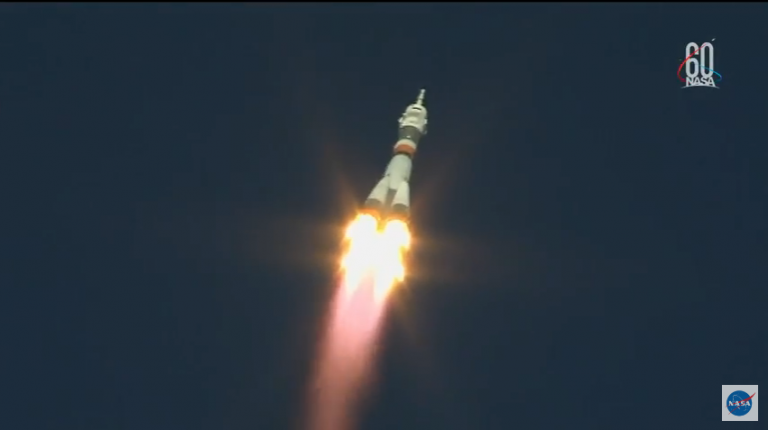Two astronauts have landed safely in Kazakhstan after being forced to abort their mission to the International Space Station today.
What went wrong? The Russian Soyuz rocket malfunctioned on liftoff. There was an issue with the booster, according to NASA, forcing the crew to separate from the rocket and fall back to Earth. US astronaut Nick Hague and Russian cosmonaut Alexey Ovchinin were reported to say they felt “weightlessness” as the crew capsule detached.
The men returned to Earth in “ballistic descent mode,” which is a sharper angle of landing than normal and during which they would have experienced high G forces. They landed about 20 kilometers east of Dzhezkazgan, Kazakhstan, where rescue crews were scrambled to find them. Both are reported to be in good condition. The launch was to have been Hague’s first space mission.
Safety history: This is the first major issue with a Russian Soyuz booster since a mission was aborted on-pad in August 1983, when a capsule pulled away from an exploding booster. There has only ever been one other launch mishap with the Soyuz, in Mongolia in 1975, according to CBS.
What happens next: NASA administrator Jim Bridenstine tweeted a statement in which he confirmed that the crew was safe and that NASA was monitoring the situation carefully. It read: “NASA is working closely with Roscosmos to ensure the safe return of the crew. Safety of the crew is the utmost priority for NASA. A thorough investigation into the cause of the incident will be conducted.”
The malfunction could cause a headache for NASA. The agency is waiting for both Boeing and SpaceX to deliver home-grown spacecraft so it no longer has to rely on Russia to send supplies and crew to the ISS.
But a report in June (PDF) from the US Government Accountability Office (GAO) estimated that delays now mean that neither company’s spacecraft will be ready to go until early 2020. That leaves NASA dependent on Russia and its Soyuz rockets until then. But it is also unlikely any Soyuz missions will fly until both NASA and Roscosmos, the Russian space agency, get to the bottom of what went wrong today.

